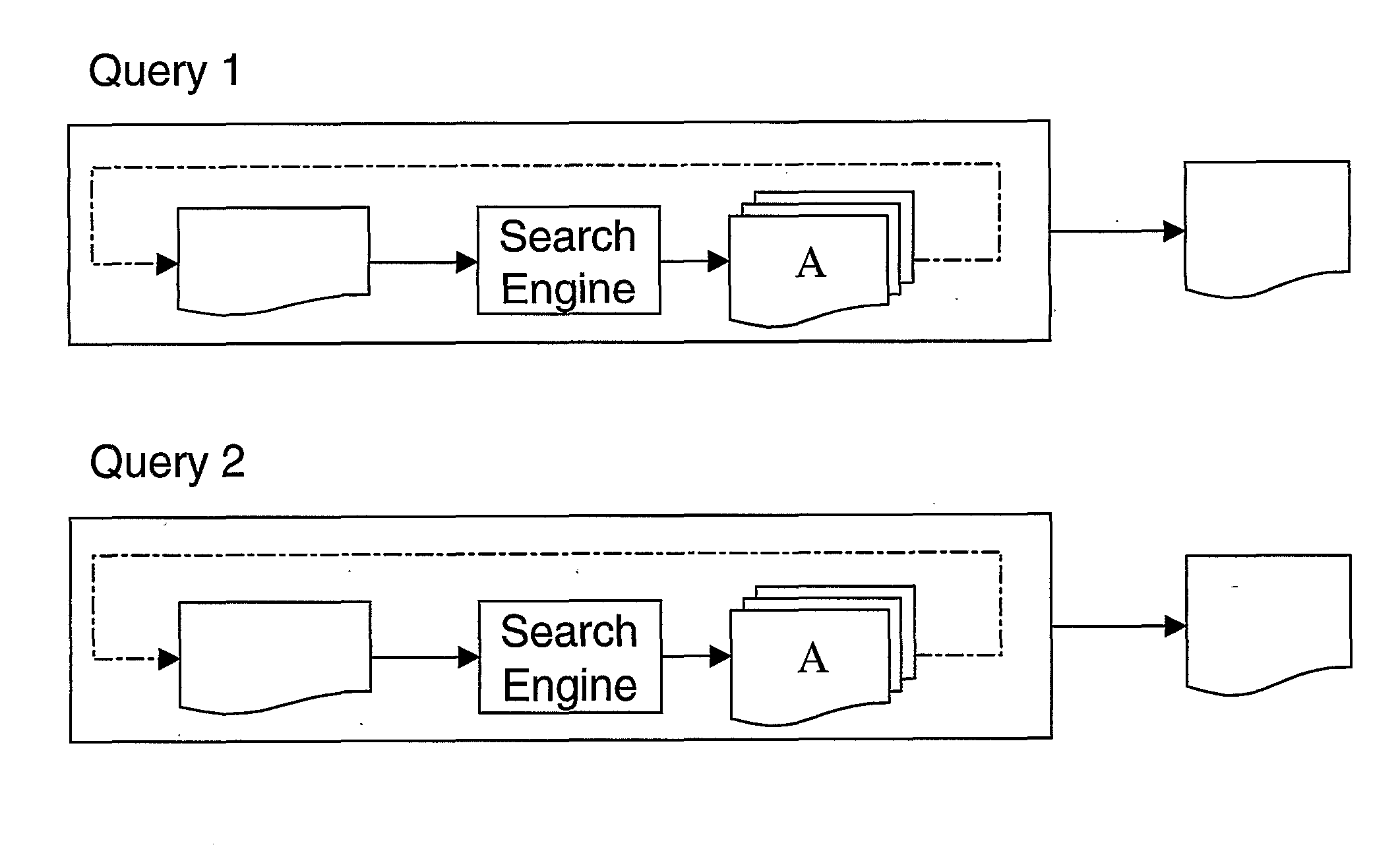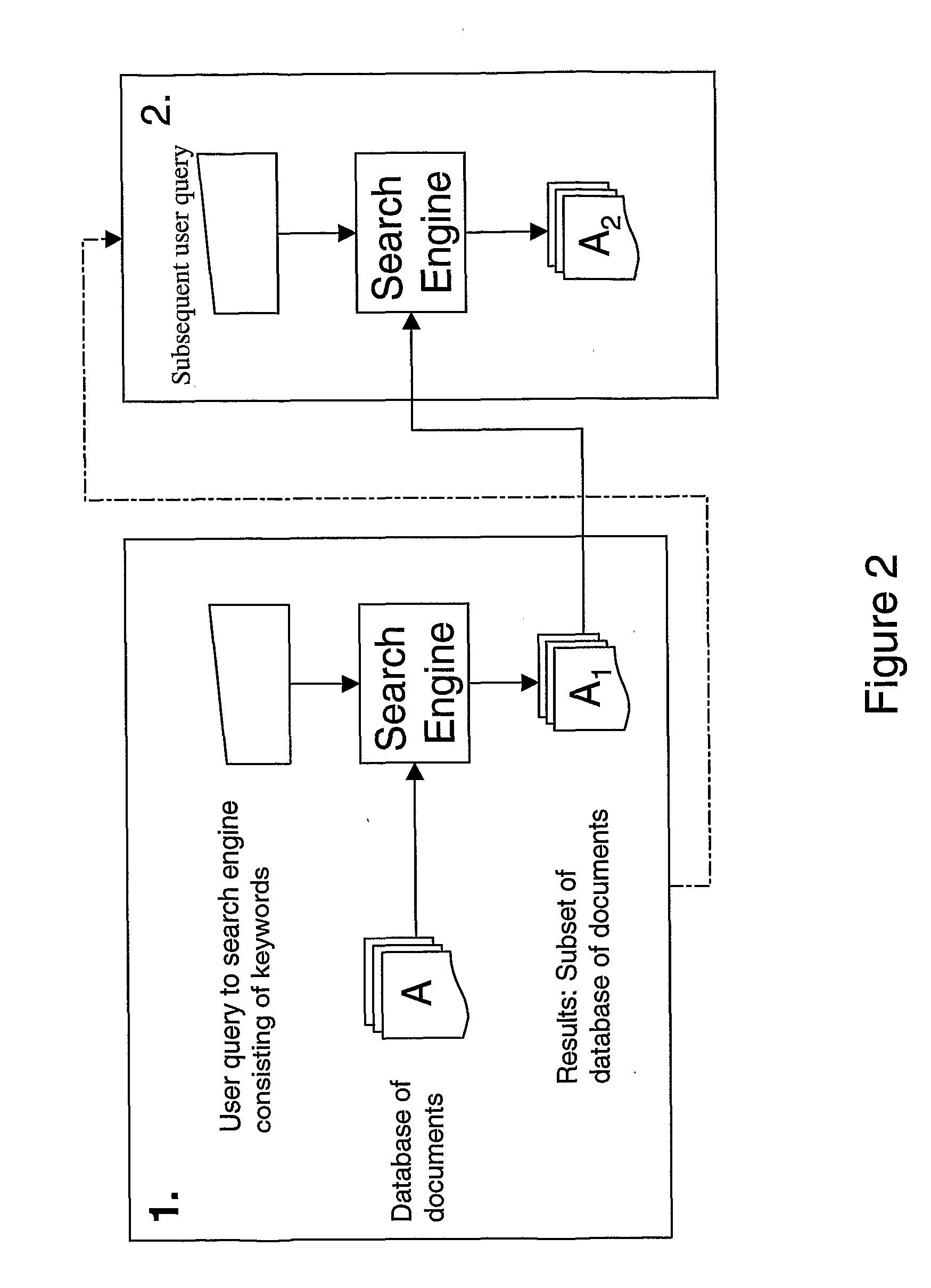Information retrieval
- Summary
- Abstract
- Description
- Claims
- Application Information
AI Technical Summary
Benefits of technology
Problems solved by technology
Method used
Image
Examples
Embodiment Construction
[0049] With reference to FIG. 1, when submitting a query via a traditional search engine, a user inputs a query made up of a keyword or a string of keywords. The search engine takes the user's query and extracts the keywords, for example by ignoring “stop words” such as ‘and’, ‘the’ etc., and may also apply a stemming algorithm to bring the remaining words into a canonical form. The keywords are then used as part of a document retrieval algorithm that is applied to a database of documents where keywords map onto the documents, the results of which are displayed to the user.
[0050] The first query is thus used to return a subset of all of the documents in the database. The user then has the option of submitting an additional query. The simplest option for the user, when submitting an additional query via a traditional search engine, is for the additional query to be treated separately, and in exactly the same way as the first query. It is then up to the user to consider the results o...
PUM
 Login to View More
Login to View More Abstract
Description
Claims
Application Information
 Login to View More
Login to View More - R&D
- Intellectual Property
- Life Sciences
- Materials
- Tech Scout
- Unparalleled Data Quality
- Higher Quality Content
- 60% Fewer Hallucinations
Browse by: Latest US Patents, China's latest patents, Technical Efficacy Thesaurus, Application Domain, Technology Topic, Popular Technical Reports.
© 2025 PatSnap. All rights reserved.Legal|Privacy policy|Modern Slavery Act Transparency Statement|Sitemap|About US| Contact US: help@patsnap.com



